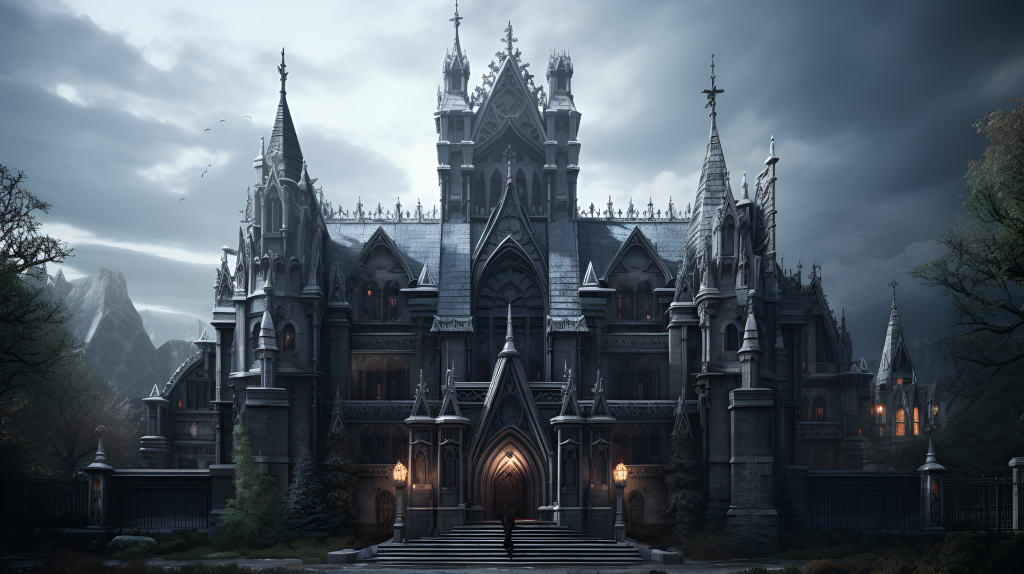When we think of Gothic Architecture, our memory takes us through the grand cathedrals and abbeys (never forget the lines of gargoyles keeping the monstrosities away), where priests and nuns chant prayers to keep evil forces at bay. Pop culture has shaped our minds in such a way that the phrase’ Gothic Architecture’ evokes the imagery of a dark, mysterious, and haunted building. However, the truth could not be far from it. Gothic Architecture commenced not out of necessity but as a dank display of growing European wealth. Another stupendous fact is that each masterpiece of Gothic Architecture is characterized by the presence of numerous windows. The reason? To let in as much natural light as it can. Hence, it is time to let go of all the old connotations.
In our previous article, we talked about the history and Gothic Architecture features. In this article, we will describe the most popular regional Gothic Architecture and their salient characteristics.
French Gothic Architecture
Rome wasn’t built in the day, and neither were the marvels of Gothic Architecture. The word ‘Gothic’ gets its name from the Germanic community, Goths. Although the Gothic wars occurred between 249 AD to 554 AD, Gothic Architecture did not commence until the early 12th century until its gradual decline in the 16th century. Since this style originated in Île-de-France, France, it is seldom known as French Gothic Architecture. The first building made (reconstructed) in this style was the Basilica of Saint-Denis.
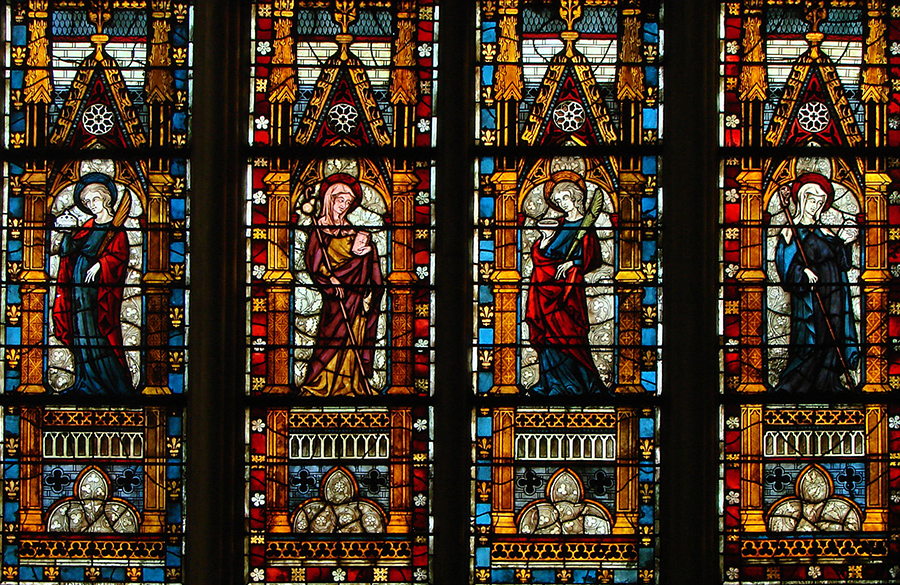
French Gothic Architecture characteristics include the extensive use of ribbed vaulting and flying buttresses to divide the weight of the walls and the roof. This allowed walls to become thinner and columns & piers to become more prevalent. It also ensured the construction of numerous windows to allow natural light to illuminate the interiors. These windows would later be decorated, depicting scenes from the biblical stories.
Phases of French Gothic Architecture
The French Gothic Architecture can be bifurcated into four notable phases. Despite these clear distinctions, there were times when some components overlapped, creating confusion amongst the architect scholars.
Primary Gothic Architecture
Primary Gothic Architecture is usually considered between 1140 to 1180. This period induced small changes within the contemporary Romanesque buildings. With the reconstruction of the Basilica of Saint-Denis, Abbe Suger began making design changes to the Carolingian-era church. Although most of the construction remained the same, he developed pointed arches, ribbed vaulting, and stained glass windows. He also commissioned the columns carved with statues of saints. These renovations inspired other buildings, with Sens Cathedral, Burgundy becoming the first church to be built in the Gothic style architecture.
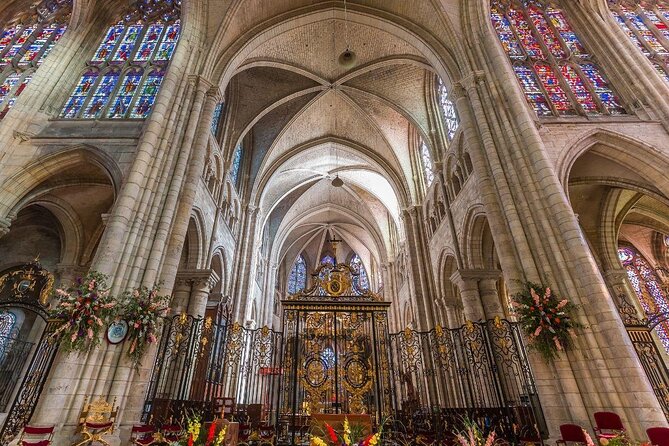
Courtesy – Viator
Classic Gothic Architecture
The second phase was prevalent between the late 12th century to the mid-13th century. Notable Classic Gothic Style Architecture examples include the Chartres Cathedral, Reims Cathedral, and Bourges Cathedral. This phase sought to improve the design elements of its predecessor to enforce the display of verticality. The resultant buildings were taller, and wider, and featured countless windows. This was the period when decorative and functional elements in Gothic Architecture like gargoyles were introduced. These gargoyles acted as rain spouts evading corrosion.
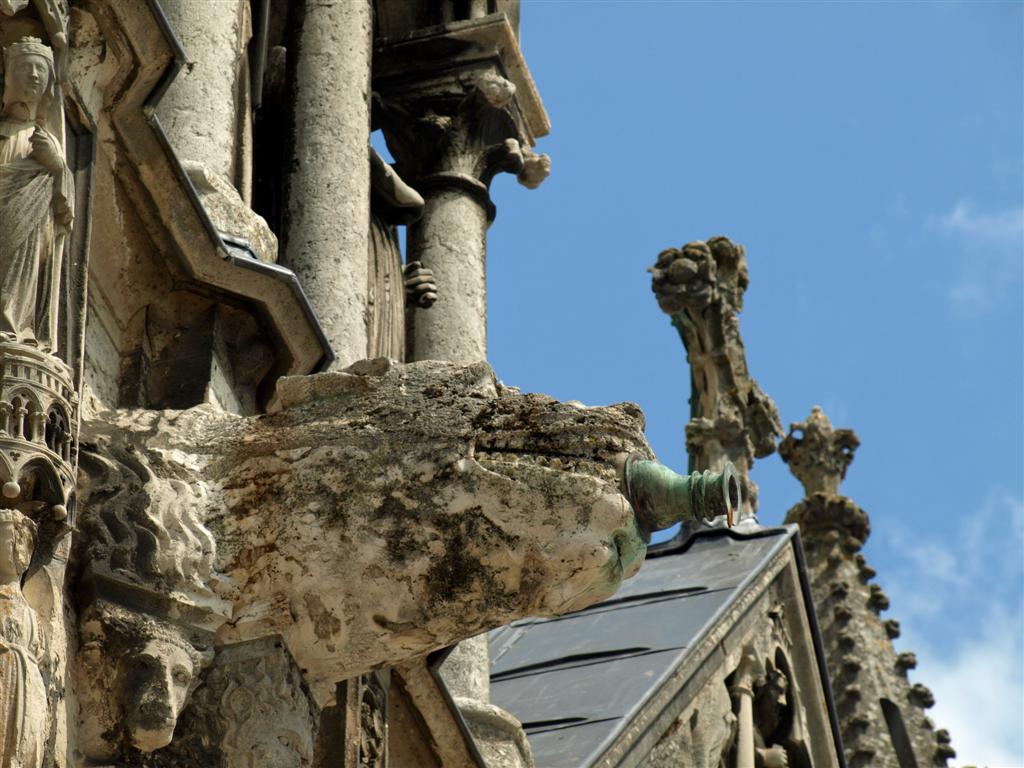
Courtesy – David Becker via Flickr
This style relied on the bar tracery and quadripartite rib vaults. The buildings also had a larger transept and collateral aisles. The polygonal choir was put before a semi-circular ambulatory which was divided into several smaller chapels. The lateral tribunes, which were a feature of the Primary Gothic were removed due to the stability provided by flying buttresses. Instead of the tribunes, interior galleries called triforium were introduced on the upper level. These triforiums however, did not have any exterior windows.
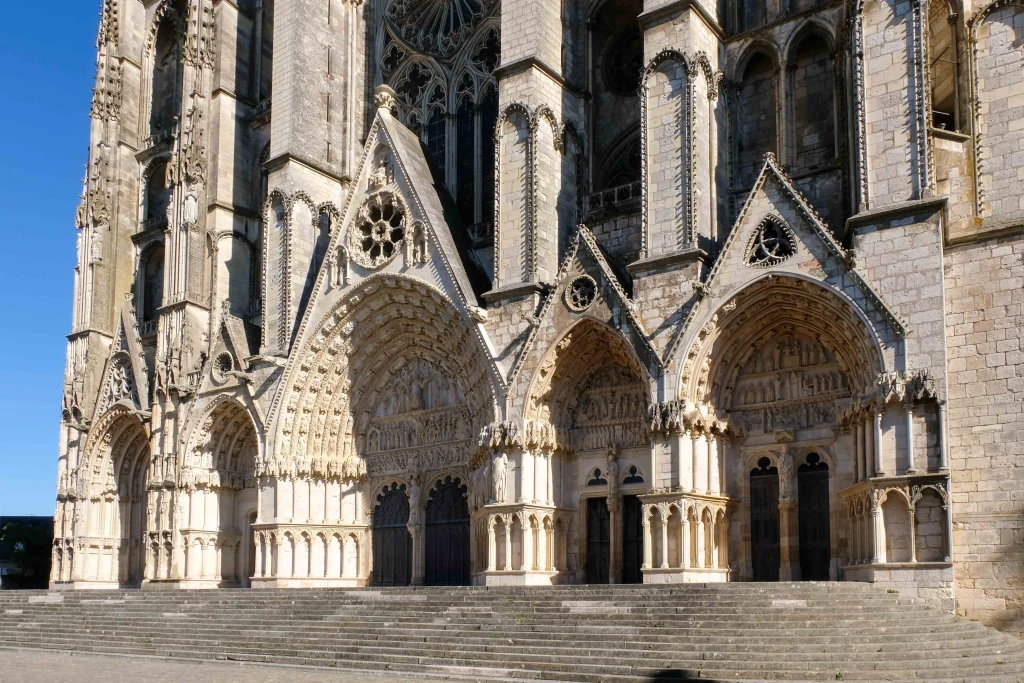
Courtesy – Road Trips around the World
Rayonnant Gothic Architecture
The Raynonant Gothic style architecture was popular between the mid-13th to the early 14th century. Prime examples of this style include the Amiens Cathedral, the Cathedral of Notre-Dame de Paris, and Le Mans Cathedral. The buildings made in this style featured higher arcades. The triforium now had external windows, which illuminated the buildings even further. Rose windows came into being with myriad designs and patterns. The focus on transept lessened which allowed for more space in the ground level.
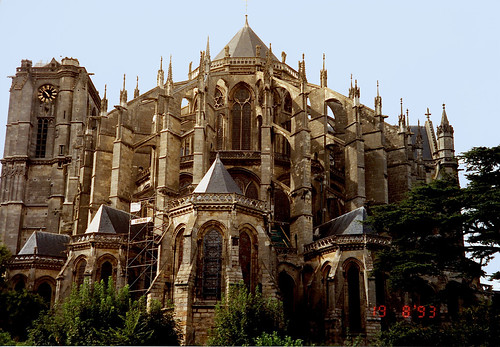
Courtesy – Spotting History
It must be interesting to note that the interior decoration almost dissipated, with these designs often occurring on the outside of the structure’s walls and the flying buttresses. The lateral tribunes disappeared completely. This phase gained notoriety solely due to the frequent use of decorative elements – the pinnacles, finials, spires, and wimpergs. Even the tracery became more intricate, with mesh tracery becoming a norm. These decorations provided weight to the flying buttresses, making them more efficient.
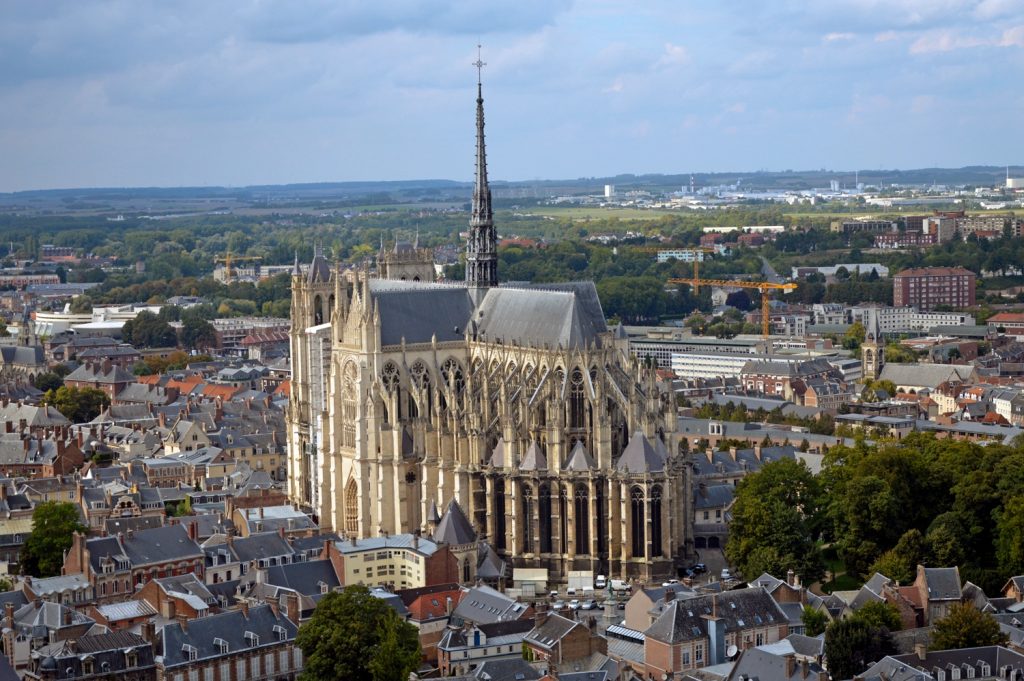
Courtesy – Smarthistory
Flamboyant Gothic Architecture
The Flamboyant Gothic style Architecture flourished between the 1350s to 1500s. The word ’flamboyant’ in French translated to ‘flaming’, which sought to incorporate flame-like designs of the tracery. The forms were more curvaceous and sinewy, a change from the vertical aspect of Gothic Architecture elements. Ornamental ribs came into being along with the ogee (curvilinear) arches and gables. The Royal Monastery of Brou, Nantes Cathedral, and Senlis Cathedral, are all glorious examples of this style of Gothic Architecture.
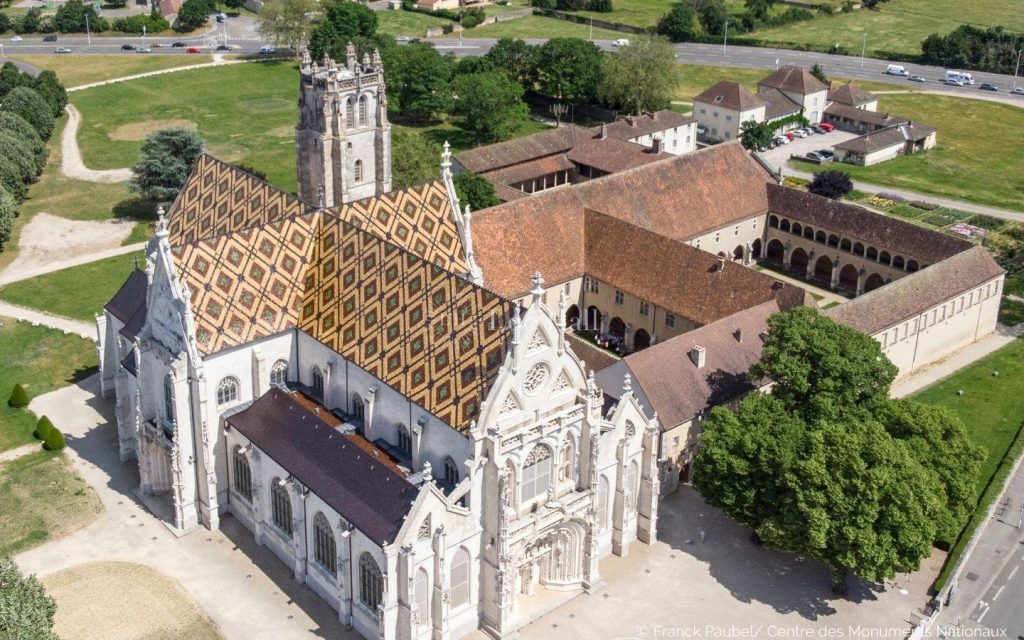
Courtesy – Loc’Hall
Gothic Revival Architecture
Gothic Revival Architecture is also known as Neo Gothic Architecture or Victorian Gothic Architecture. The style gained popularity, predominately in England between the mid-17th century. It slowly began to falter before vanishing in the late 19th century. However, it was then that its craze spread worldwide. Gothic Revival found a newfound fame yet again in the middle of the 20th century. Gothic Revival Architecture was born out of the need to repel the growing industrialization. At the time, Neoclassical Architecture was associated with radicalism and liberalism. Thus, Gothic Architecture made the best proponent of conservatism and traditionalism. The Oxford University Museum (Oxford), St. Patrick’s Cathedral (New York), Big Ben (London), Chhatrapati Shivaji Maharaj Terminus (Mumbai), The Minor Basilica of San Sebastian (Manila), The Metropolitan Cathedral of Our Lady Assumption and Saint Paul (Sao Paulo, Brazil) represent the diverse hybrid buildings which pay a tribute to the Victorian Gothic Architecture.
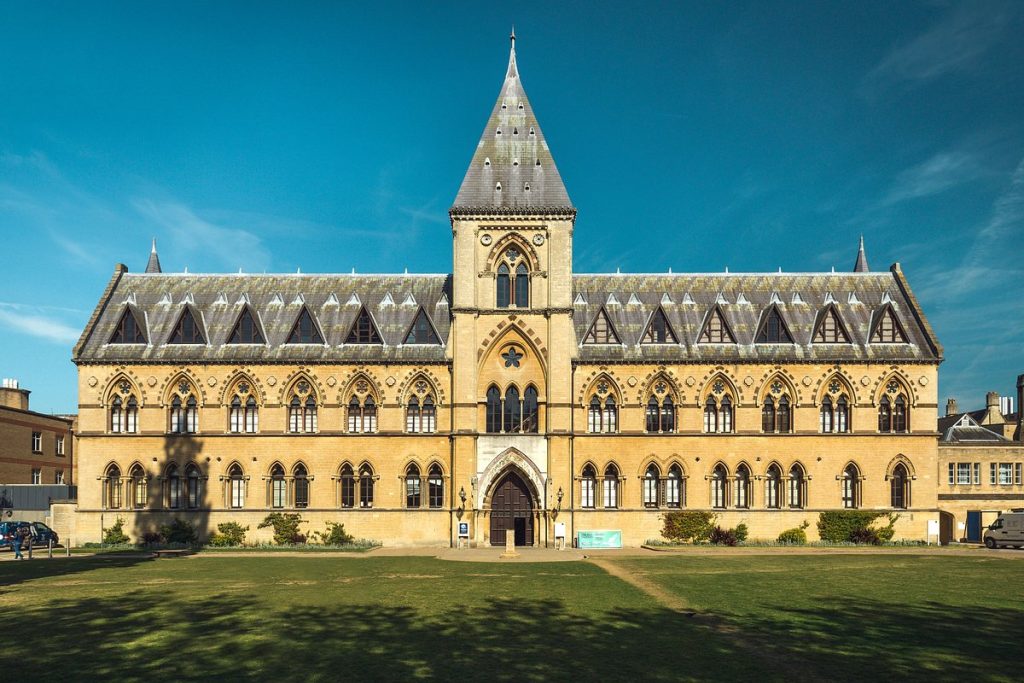
Courtesy – Tripadvisor
Characteristics of Neo Gothic Architecture
It is quite difficult to differentiate between the medieval Gothic Architecture and the Neo Gothic Architecture. This is because the stylistic Gothic Architecture elements such as ribbed vaulting, extensive columns and piers, intricate tracery, and others remained almost the same. While we can obviously distinguish these styles based on the chronology, we may also segregate them based on their need. On one hand, Gothic Architecture saw a boom to accommodate the European population and make the buildings taller, thinner, and luminous. On the other hand, Victorian Gothic Architecture was to invoke a sense of nostalgia (which was informed by the core concepts of Romanticism). The architects at the time wished to propagate a sense of culture, something which was diminishing with the repeated use of machinery.
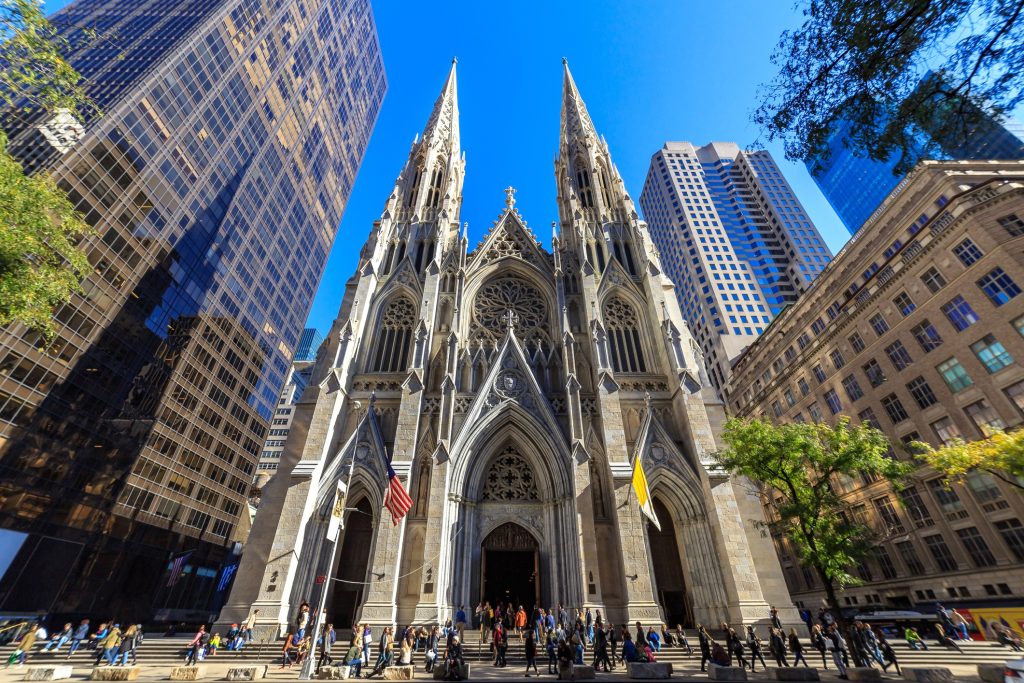
Courtesy – U.S. News Travel
This does not mean that Victorian Gothic Architecture did not use modern technologies or materials. In fact, the stones were seldom amalgamated with steel or iron to make them stronger. This style, which emphasized verticality as well, was perfect for the confines of the urban spaces. Therefore, the style seeped into residential buildings and civic properties. Since Gothic Architecture had proliferated into the world, each region had hybrid styles (which again makes it harder) to pinpoint unique and universal Gothic Architecture characteristics. Modern technologies were frequently used in Neo Gothic Architecture. The stained glass windows could be made more intricate with precise designs and detailings.
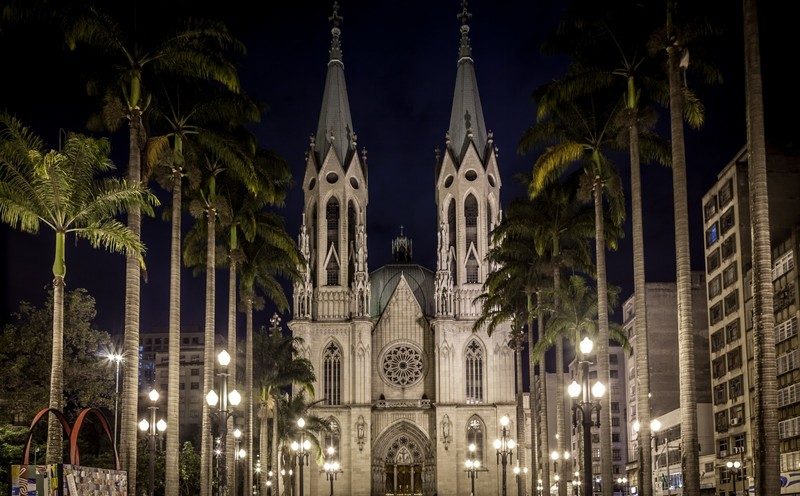
Courtesy – Rotas Turisticas
Gothic Architecture in India
Indo Gothic Architecture or Indo-Saracenic Architecture was brought to India by British architects in the 19th century. The architectural style retained the Hindu motifs and decorations, but their design was inspired by Islamic architecture, especially the Mughals. Hence, the movement is also known as Mughal Gothic Style Architecture or Neo-Mughal Gothic Architecture. The Chepauk Palace in Chennai is considered to be the first foray into Gothic Architecture in India. Although this style was most commonly implemented in India, it also spread to Sri Lanka, Malaysia, and the United Kingdom. The Mysore Palace (Mysore), Victoria Memorial (Kolkata), and Secretariat Building (Delhi) form the prime examples of Indo Gothic style Architecture.
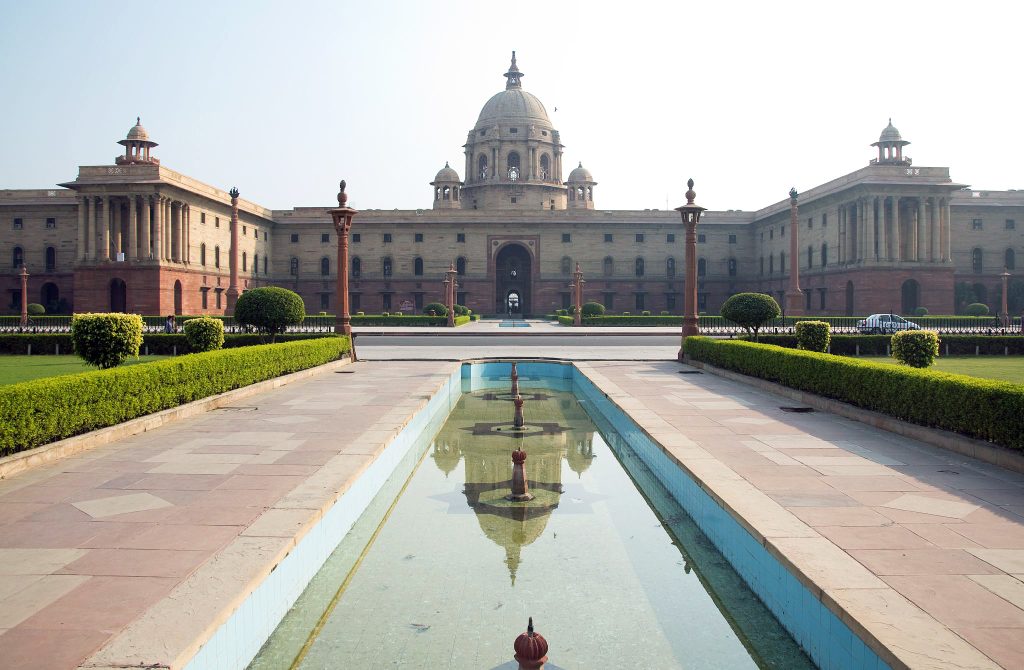
Courtesy – Wikipedia
Characteristics of Gothic Architecture in India
Indo Gothic Architecture may be understood the best as the misguided aspirations of British architects to portray the ‘true and innate’ Indian-ness while still employing modernist techniques. Even though it was supposed to be an Indian narrative, it morphed into the growing prowess of the imperial nation. Due to the high costs of resources, indigenous knowledge & skill of the labourers, and the customization of ornamental patterns, the style was mostly implemented on civic buildings (although a few residential properties were partly constructed in accordance).
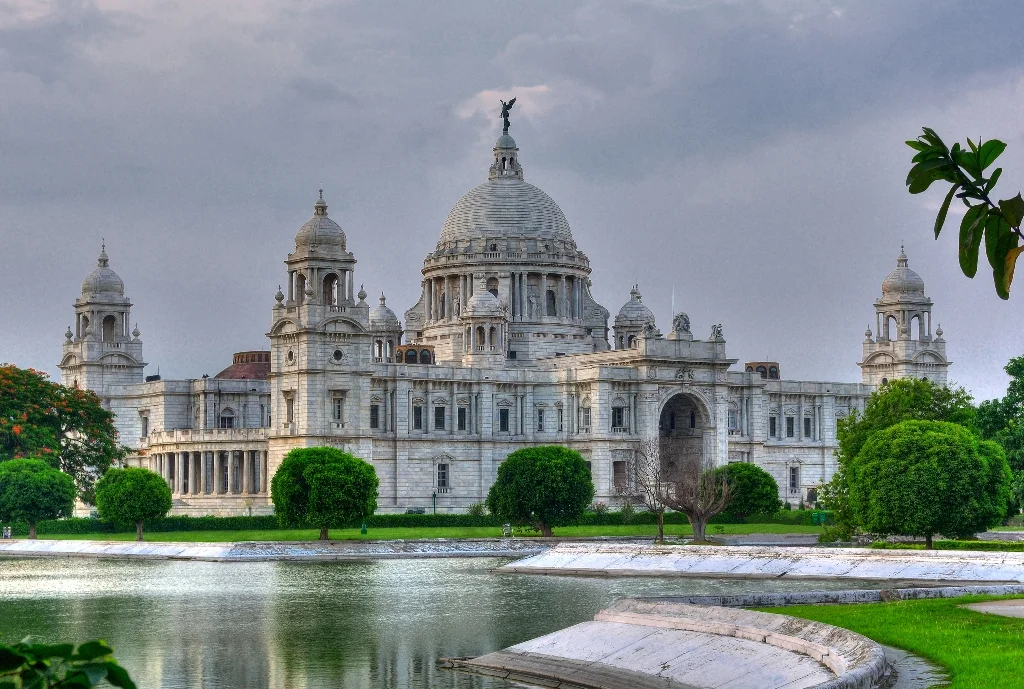
Courtesy – Remote Traveler
The striking characteristics of Indo Gothic Architecture include bulbous domes with overhanging bracketed eaves. The arches were either pointed, cusped, scalloped or made into a horseshoe. In West Bengal, the roofs were curved. Octagonal, square, or round domes with pinnacles, minarets, or towers were also seen. To impart further grandeur, these buildings consisted of an open pavilion. While the use of perforated, latticed, or openwork screens was common inside the structures, they were also implemented in the windows or balconies. These structures were also known for their entrances, called ‘iwans’. The gates were built under an arched facade.
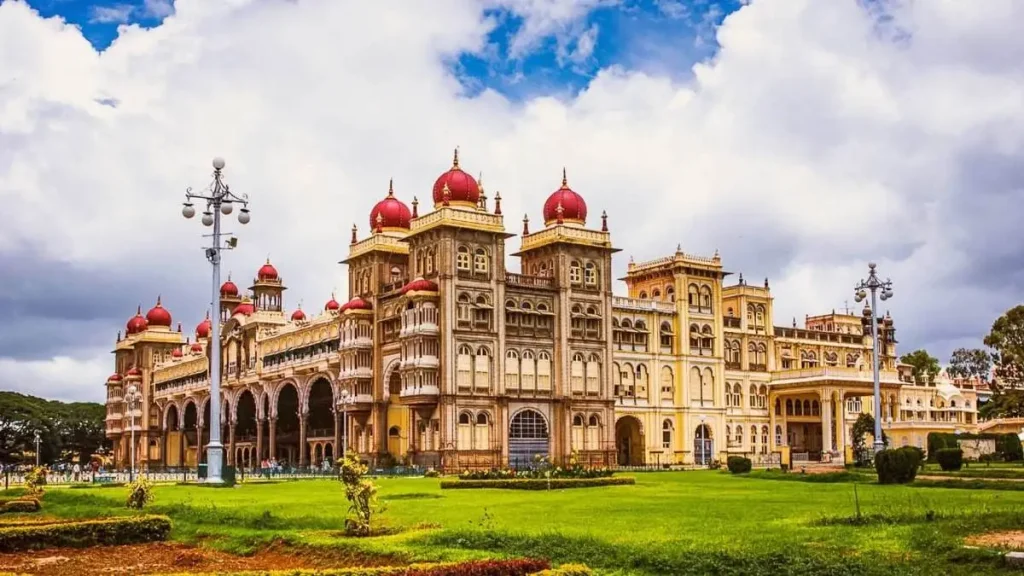
Courtesy – Mysuru Infra Hub
Image Courtesy – Wallpaper Abyss – Alpha Coders

Hi Ya’ll !!
I love writing about pop culture and all things queer.
Sub Editor at Abir Pothi

